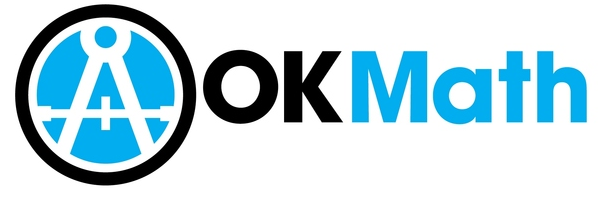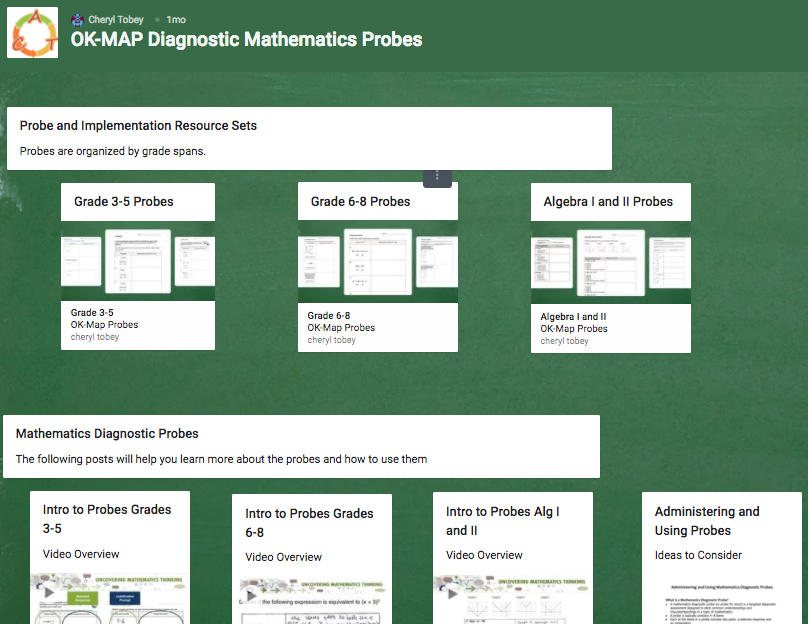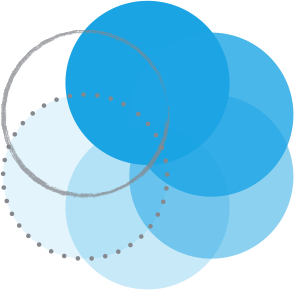Many of us have been in faculty meeting lately where the topic of choice is “Literacy Across the Curriculum.” Let’s be honest, as math teachers, especially secondary math teachers, we often leave those meetings thinking “What?!? Writing in math?!? How is that supposed to work?”
One of the Standards for Mathematical Practice is to “Construct viable arguments and critique the reasoning of others.” What better way to do that than in words: Verbally and written.
Here are a few reasons how students can benefit from writing in Math:
- Writing causes students to have to process and think about the mathematics in a different way. Having to verbalize their thinking forces them to think more critically about it.
- Writing can increase student engagement. If students have a chance to write down their thoughts about concepts or problems before the teacher starts calling on students, more students would be ready to respond. Writing gives them extra time to process ideas.
- Writing can increase critical thinking and help students discover their own misunderstandings and errors. (Ideas from this blog and this one)
Remember, writing in the math class doesn’t have to seem like a chore or a separate thing you just “have to do.” Try to incorporate it and use it to support what you are already doing. With that in mind, here is my list of top 7 Quick and Fun Ways to Write in Math Class.
1) Cartoons

Cartoons cause students to have to process information in a different way than just showing their work. Have them create a cartoon or animated video where the characters are explaining their solution, defining a term(s), or making connections between concepts. The trick to having students create math cartoons is that the task itself needs to be High Cognitive Demand and worthwhile. Here is an example of a GoAnimate video from a middle school math class, asking students to explain how they found the surface area of a box. It was tied to an investigation where the students physically flattened out a cardboard box and worked with surface area. Be creative. Let the kids be creative.
FREE resources:
- GoAnimate.com allows the user to type in text for animated characters to speak in a cartoon.
- ToonDoo.com allows students to create free, online cartoons with a wide range of backgrounds and characters.
- Blank Cartoon templates requires nothing but imagination, a pencil, and paper.
2) Exit Slips
Exit slips are a classic, easy to incorporate strategy used by many teachers. The idea is simple. Pose a questions, prompt, or simply ask an opinion just before class ends. Make sure all students have time to complete the exit slip and turn it in as they walk out the door. You can use them as formative assessment or ask something you might grade. Either way, the goal is to get kids writing about math!
Here are some ideas:
- What is the most important thing you learned in class today?
- Did you understand today’s lesson? Why or why not?
- What questions do you have about today’s lesson?
- How well are you understanding this chapter? What can I do to help?
- What do you need to do to prepare for our upcoming test?
- 3-2-1. Write three things you learned today, two questions you still have, and one thing you know you nailed.
3) Explaining Concepts
Instead of just asking “explain your thinking,” ask students to explain a concept or definition so that an absent classmate, a parent, or even a student who will be in the class next year could follow and understand. In explaining a concept or idea to someone else, the students will have to process and decide on what is important to share as well as what order to share it in. Don’t give up if you do this the first few times and the students struggle. Let them actually pretend to be that absent classmate or parent and “critique” each others written explanations. Remember that classic activity of asking a student write down how to make a peanut butter sandwich and then demonstrate what their directions really said?
For an extension or project:
- One middle school teacher had her students create their own “textbook.” Throughout the year, students would create an explanation page for each topic and keep it in a binder at the end of the year, they had one for every major concept from the year. How powerful is that?! With technology, students could easy use google drive to create and store their “pages.” For older grades, have kids create a new help web page on a certain topic. For example, they could take this “help page” with the question “I do not understand area and perimeter” and recreate it.
4) Write-Pair-Share
Think-pair-share (TPS) is one of my all time favorite classroom strategies. I was always terrible at wait time, but when I would ask students to all think about the questions or concept first and then run their thoughts by a partner, I noticed that wait time wasn’t an issue because more students were confident to share. I love that TPS can be as informal or formal as you need it to be, depending on the day.
Now, imagine TPS with writing or Write, Pair, Share (WPS). Ask them to write the definition of a term in their in their own words or write three similarities/differences between two concepts (like prisms and pyramids). That act of writing down their thinking is crucial and in this step, it doesn’t have to be fancy. Then, have the students pair up. You as the teacher can decide if it needs to be an elbow partner, a random friend, someone across the room, ect. Once they partner, their task is to compare their answer and rewrite a new one together. You can then have them group into squares with two pairs of partners and renegotiate another “new” answer. The goal being with each revision of their answers, the students converse and learn from each other and refine their understanding together. Depending on time and what your objective is, they can then share out or create a mini-poster as a group/pair.
5) Error analysis
One of my favorite Teaching Channel videos is “My Favorite No.” The teacher doesn’t specifically have the students write, but this could be an easy place to have them write their critiques (or even do a WPS). A great idea I heard from an colleague is for you, as the teacher, to do an assignment, worksheet, or series of problems complete with a few strategic errors. It is similar to “My Favorite No” but because it is the teacher’s work, it could be a “safe” way to start modeling how to critique the work of others.
6) Blogs
If you are a techy person, I would encourage you to think about how you could use blogs in your classroom. You could set up with a class blog that all students could post to, individual student blogs, or your own blog where you pose questions. Here is a blog post I created for a undergraduate class I taught. The students responded to the answers in the comments. And here is an example of what a student could post to a blog. Edublogs or WordPress are two great places to start if you are interested in blogging. Edublogs is great for schools and student blogs and wordpress is a popular blog site that has great privacy features. You could even create a google drive as a “blog” that would not require anything to be posted online.
[warningbox]DISCLAIMER: Always run the idea of blogs by your administrator and get parental support/permission. Blogs can be keep private and secure, but it is better let everyone know up front.[/warningbox]7) EXPLAIN YOUR THINKING

Instead of giving directions that say “show your work,” change what you say to “explain your thinking.” You may not always get full and complete sentences, but the more students are asked to “explain,” the better and more detailed those explanations will become.
Here are a few more resources:
- Marilyn Burns has a great book that is worth checking out: Writing in the Math Class. She was writing in math before writing in math was cool.
- Paige Keely has a great resources for more quick formative assessments that could easily be tweaked to include writing of all sorts: Formative Assessment for Mathematics
- This NCTM Teaching Children Mathematics Article talks about using rubrics if you choose to grade students writing.
- Blogging: “The Avery Bunch” is a 6th grade class edublog. Blogging with Students is a great step-by-step resource for teachers. Here are “14 Steps to Meaningful Blogs with students.
Thanks for letting me share! I would love to chat with you and hear your ideas!! Check out my weebly page (shameless plug) or email me at [email protected].




